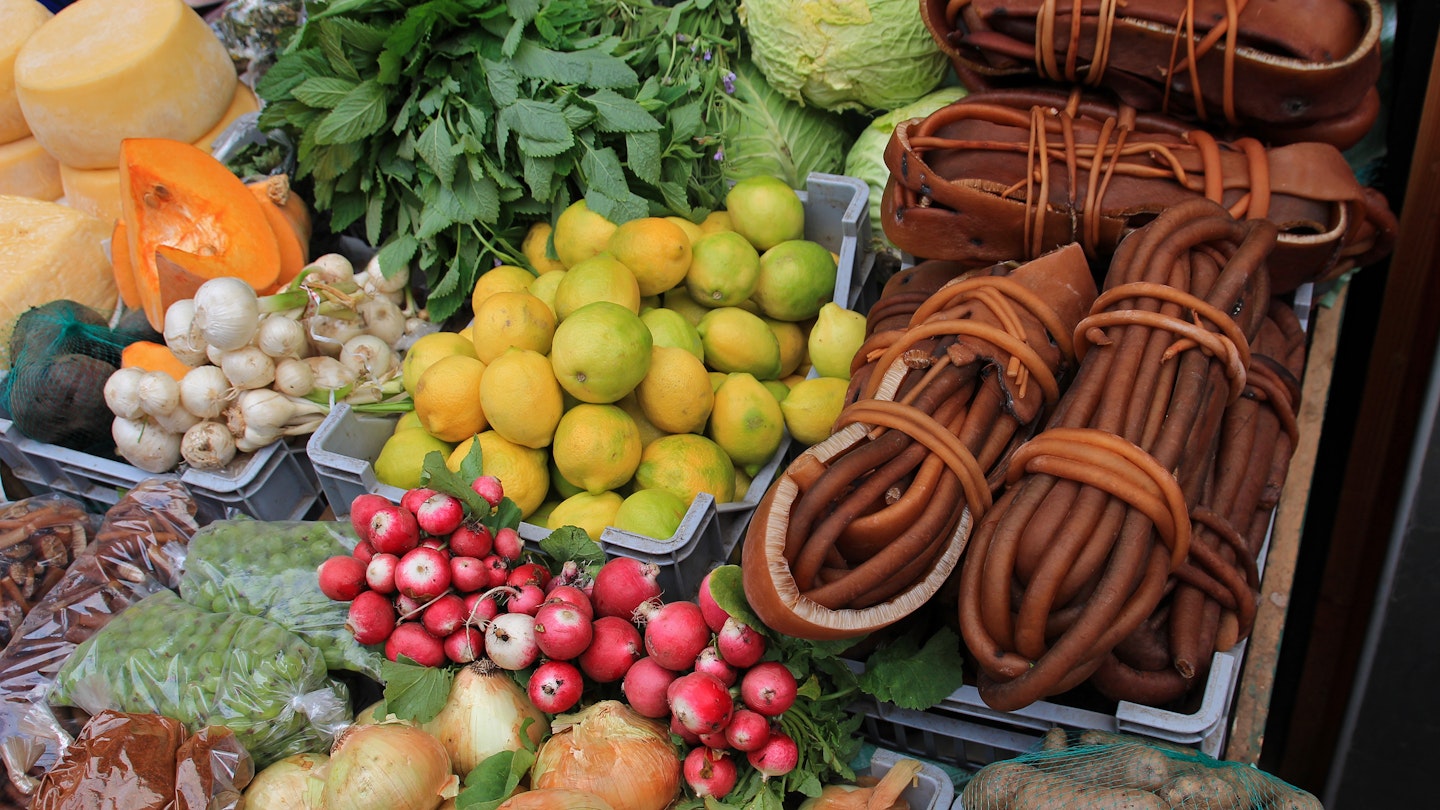Culinary Adventures in Chile
Home to buzzing seafood markets, food-centric highland villages, and sun-drenched vineyards, Chile offers a dazzling array of culinary temptations. The nation’s vast size and varied geography have created astonishing diversity in regional delicacies, providing countless opportunities to enjoy a memorable meal. You can indulge in ancient dishes fired up in earth ovens in Chiloé, enjoy a solar-cooked feast in the Elqui Valley, and discover seafood specialties in the picturesque lanes of Valparaíso. All these culinary delights harmonize beautifully with Chile’s famous wines and decadent pisco cocktails.
The Pacific Coast
No matter where you travel in Chile, you won’t be far from the ocean in this pencil-thin country with a coastline stretching over 4200km. The bountiful Pacific in its backyard gives Chile some of its best-loved staples including loco (abalone), erizos (sea urchins), machas (razor clams), jaibas (crabs), ostiones (scallops), and congrio (conger eel), along with yellowfin tuna, corvina, merluza (hake), and many other fish. Seafood enthusiasts can visit vibrant mercados de mariscos (seafood markets) along the coastline, from Arica in the north to Valdivia in the south.
For an unforgettable experience, consider a pilgrimage to Valparaíso. This bohemian port city is renowned for its colorful murals, steep cobblestone streets, and a passion for maritime cuisine. Dine your way through the hills, stopping for the fresh catch of the day at Restaurant La Concepcion, savor chalkboard specials at El Peral, and enjoy ceviche at Mm 450 La Cevicheria.
Elqui Valley
Located in northern Chile, the Elqui Valley is a picturesque region of rolling hills, trickling mountain streams, and clear night skies. This scenic backdrop is perfect for experiencing hearty Andean cuisine. Peaceful towns like Vicuña offer filling plates of pastel del choclo (a corn casserole with hard-boiled eggs, olives, and ground beef or chicken) and local trout, often complemented by traditional desserts like mote con huesillo (dried peaches with cinnamon, brown sugar, and husked wheat).
The valley enjoys nearly perfect weather, boasting over 320 days of sunshine. Family-run eateries in the village of Villaseca make use of solar ovens to bake bread, roast meats, and prepare leche asada (flan) for dessert. One highly recommended spot is Delicias Del Sol.
No visit to the Elqui Valley is complete without touring at least one pisco distillery. The region is home to several of the country’s leading pisco producers, offering memorable tours and tastings at venues like Pisquera Aba.
Colchagua Valley
Less than 200km south of Santiago lies one of South America’s premier wine regions. The vineyards in Colchagua Valley have a rich history, with the first vines planted by Jesuit missionaries in the mid-16th century. The sun-drenched valley, framed by mountains, produces some of Chile’s best red wines, showcasing a great variety nurtured by diverse soils and microclimates.
Bold reds with ripe tannins dominate the selection, made from grapes like Carménère, Cabernet Sauvignon, Syrah, and Merlot. Visitors can tour dozens of wineries throughout the region, enjoying tastings in the cellars. One interesting option is Montgras, where you can compose your own wine blend from various varieties. The vibrant town of Santa Cruz serves as the gateway to the region, hosting the lively Fiesta de la Vendimia (Grape Harvest Festival) each March.
When planning a wine-tasting excursion, remember to have a designated driver, as Chile enforces a strict no-tolerance policy on drinking and driving. Better yet, consider a guided tour. Operators like Red del Vino will take you to some of the valley’s fascinating small-batch producers.
Chiloé Archipelago
Nestled just north of Patagonia, the misty islands of Chiloé are rich in culture, architecture, and culinary traditions that appeal to food lovers. At vibrant food markets in towns like Ancud, you can sample hearty dishes like cazuela (a meat and vegetable stew) or chupe (fish casserole). However, the true culinary gem is curanto, a dish likely predating the Spanish colonization, traditionally prepared in earth ovens.
This extraordinary dish involves layering ingredients atop heated stones in the ground. The process begins with shellfish, pork, and chicken, followed by chapaleles (potato dumplings), various vegetables, and native leaves. After simmering for couple of hours, the meal is ready. Many places around the archipelago serve curanto, but one of the most recommended locations is Restaurant Quetalmahue, situated in a quaint fishing village approximately 15km west of Ancud.





